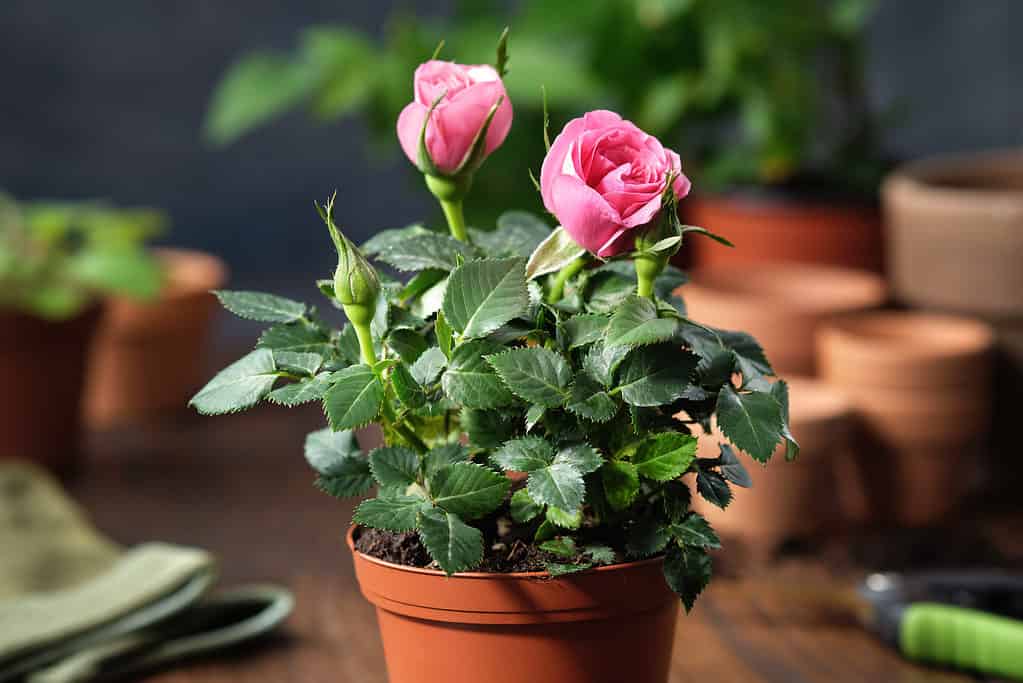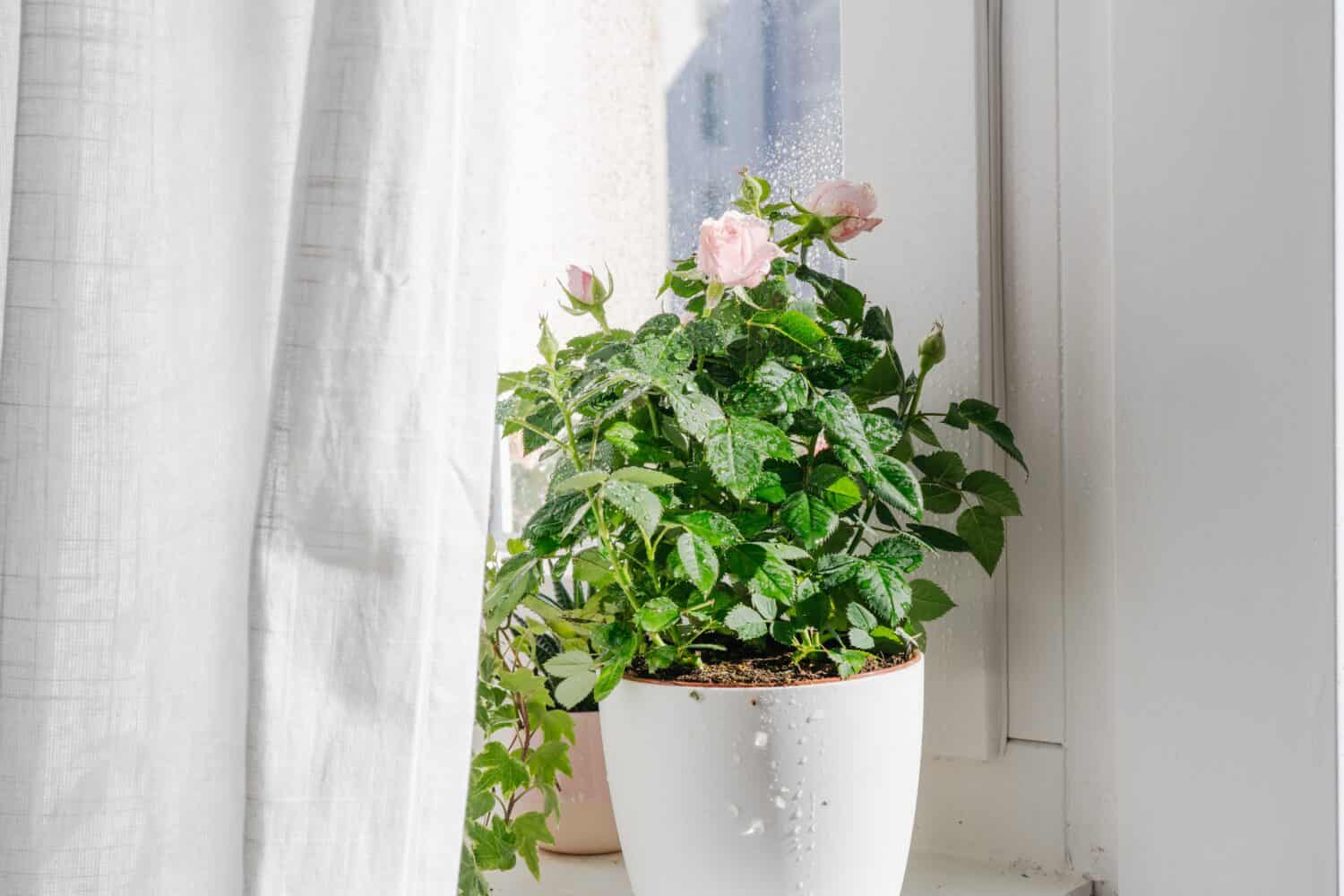Roses that grow in Alaska? Yes, you read that right!
When you think of the state of Alaska, nicknamed “The Last Frontier,” it might seem unbelievable that roses could grow there. Aren’t roses are delicate, high-maintenance flowers? And isn’t Alaska best known for bears, glaciers, and snow? Lots of snow? Nevertheless, roses do grow in Alaska, both wild species and those cultivated by gardeners. And the story of roses that grow in Alaska is the story of what versatile and resilient plants roses really are.
There’s More to the Rose than Its Pretty Colors and Intoxicating Scent.

Roses look delicate, but they come from a tough family.
©iStock.com/ChamilleWhite
Scientifically speaking, roses are in the Rosaceae plant family, a group that includes food crops such as apples, almonds, cherries, pears, raspberries. Roses are probably the most widespread plants in that group, with over 120 wild species that were selected and bred by humans to create the garden and hybrid roses that you’ll find in today’s backyards, greenhouses, and flower shops. Roses are one of the oldest flower types; fossils suggest they’ve been around for 35 million years. So clearly roses are survivors, and tougher than we give them credit for. In fact, there’s a rose bush in Germany that’s believed to be 1,000 years old.
Some Roses Grow Wild in Alaska

The Arctic rose grows wild in Alaska.
©JT Fisherman/Shutterstock.com
One rose that grows in Alaska is the “prickly rose,” Rosa acicularis. It’s also known as the Arctic rose, a nod to its cold-weather tolerance. The arctic rose grows in forested areas and grasslands in Alaska, and it’s an important food for various birds and mammals, including shoeshoe hare, who love to nom on it all year round. The flowers are also a major source of nectar for the bees of Alaskan beekeepers. The Arctic rose is high in vitamin C, and the native populations of Alaska have traditionally used the plant for various food, medicine, and ceremonial uses.
Another wild rose that can handle Alaska’s harsh climate is the Nootka rose, Rosa nutkana. Native to the western U.S. and Canada, this rose can be found in the southern regions of Alaska. It’s a favorite food of large mammals like deer and elk, who eat the plant’s fruit (called the hips), as well as squirrels, mice, beaver, and porcupines, who eat the twigs and leaves. This rose makes a good landscape plant that will attract pollinators and wildlife.
Woods’ rose, Rosa woodsia, is a native rose that grows all over western North America, central Alaska included, and as far south as northern Mexico. Because of its strong rhizome system, it’s been used to control erosion along roads and stream banks. It’s an adaptable plant that thrives in wetlands and along rivers, but can also grow on bluffs and in forests.
The Sitka rose, Rosa rugosa, is another rose that grows in Alaska. Unlike the above species, this rose is not native to North America. The plant was first cultivated in Alaska in the early 20th century. According to the Alaska National Heritage Program of the University of Alaska, the Sitka rose is an invasive species. It’s ranked 72 out of a possible 100 for its potential impact on native ecosystems.
Okay, What About Garden Roses? Can They Grow in Alaska?

Take heart, Alaskan gardeners. You can find roses that grow in Alaska.
©Tasha-photo/Shutterstock.com
So now you know that some wild rose species have what it takes to survive, even thrive, despite the cold winters in the state of Alaska. But what about cultivated roses, the beautiful hybrids that are so popular among gardeners and floraphiles in the Lower 48? Are Alaskans just of out of luck when it comes to growing garden roses? Well, your average Alaskan rose craver doesn’t have it as easy as gardeners in warmer climes. But the denizens of Alaska are quick to take up a challenge.
Some Hardy Roses Will Grow in Alaska
According to Alaska Master Gardeners Anchorage, some hardy rose species can handle the Alaska climate. These include Blanda roses, and Spinosissima or Pimpinellifolia roses, also known as Scotch roses; Foetida and Foetida bicolor species, such as Austrian Yellow Rose and Austrian Copper Rose. Modern shrub roses are also worth trying. Alaskan rose growers, talk to you your local nursery for suggestions.
You Can Grow Tender Roses in Containers, and Keep them Indoors in Winter

Tender roses that gardeners grow in Alaska benefit from staying indoors for the winter.
©Kattecat/Shutterstock.com
For gardeners dead set on enjoying less hardy roses, like tea roses, another option is to grow them in pots. You can keep them in warm and sunny spots, and bring them indoors in the cold season. Roses that winter indoors as houseplants need time to adapt to the inside conditions, though. Start by bringing them inside for increasing periods of time before the cold weather hits. They’ll need lots of light while indoors. But cut back on watering so the plant will enter a semi-dormant rest period until spring growth begins. It’s also possible to put the plant into a dormant state by keeping it in a cold (30-35 degrees) dark place. Water the roots often enough to keep them from drying out, typically every 4-12 weeks.
Or Just Keep Buying New Ones and Hope for the Best
For some gardeners, a trade-off for living in the beautiful state of Alaska is having to treat their roses like annuals and buy new plants every spring. Some rose lovers make a point of buying different varieties every year, and occasionally find a variety that’s able to survive the winter.
The photo featured at the top of this post is © BSG_1974/Shutterstock.com
Thank you for reading! Have some feedback for us? Contact the AZ Animals editorial team.







